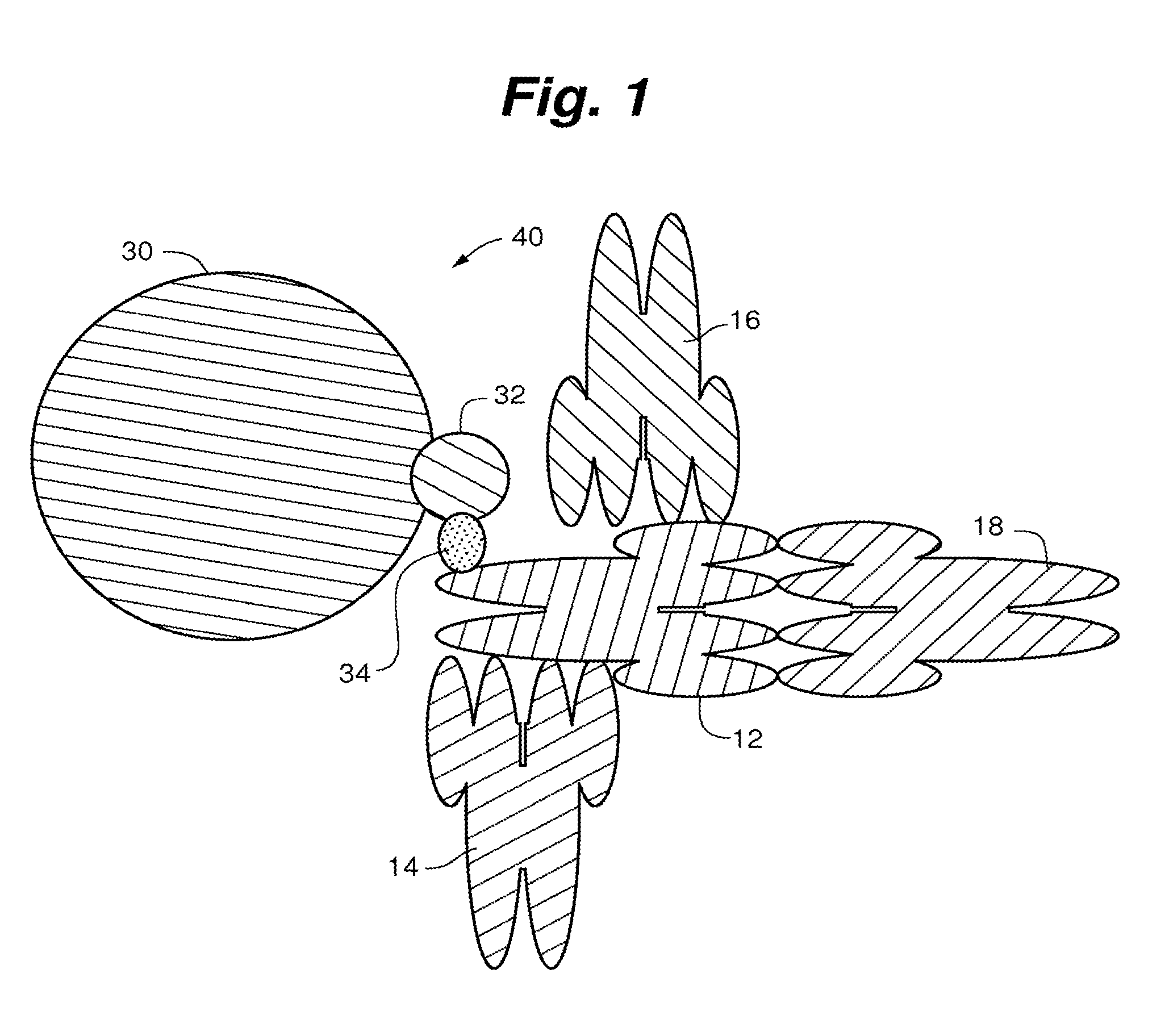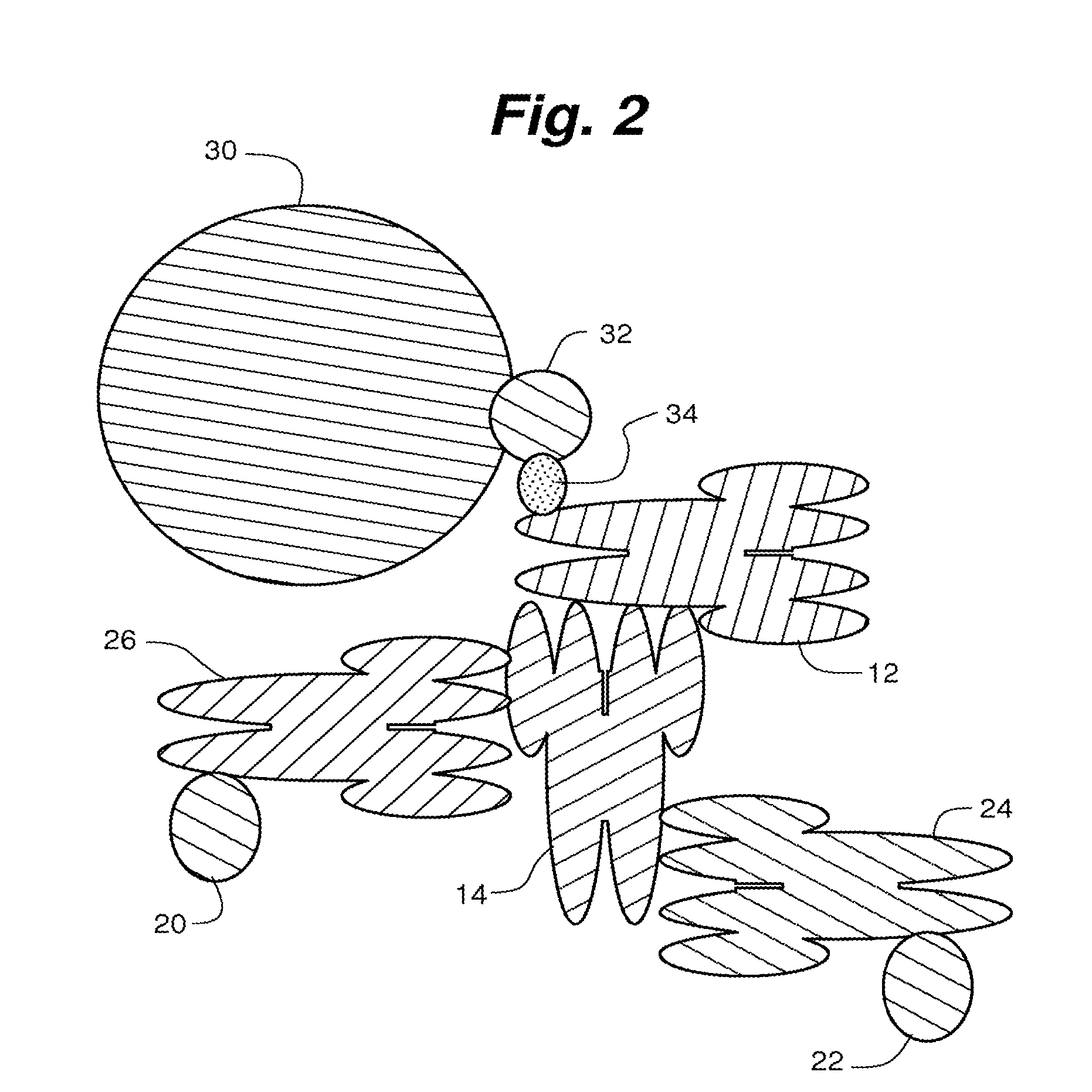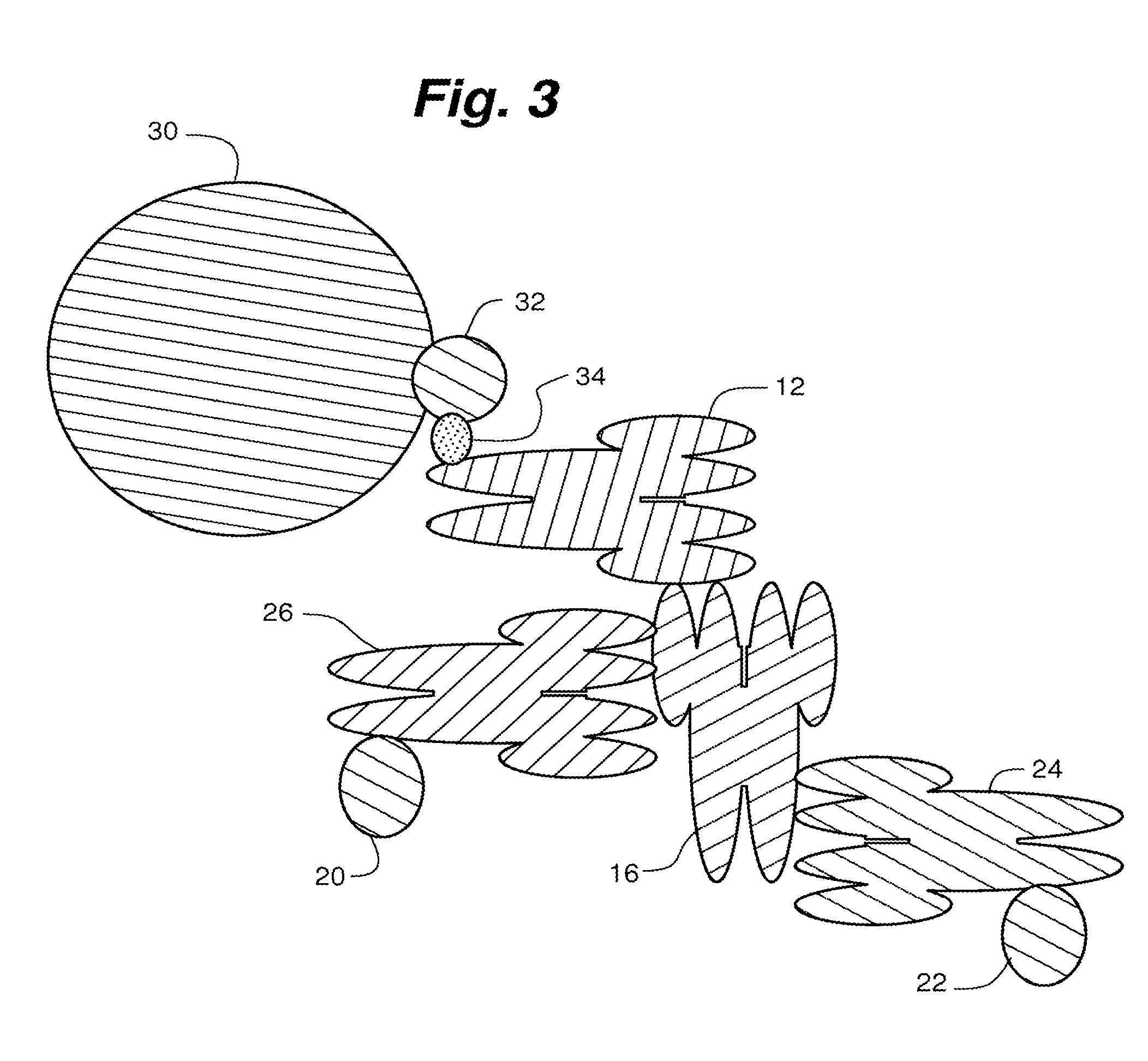Compositions, systems and methods that detect and/or remove cross-reactive antibodies from a biological sample
a biological sample and cross-reactive antibody technology, applied in the field of compositions, systems and methods that detect and/or remove cross-reactive antibodies from biological samples, can solve the problems of false positives and false negatives, false positives, and increased haaas
- Summary
- Abstract
- Description
- Claims
- Application Information
AI Technical Summary
Benefits of technology
Problems solved by technology
Method used
Image
Examples
example 1
[0072]Example 1 describes one exemplary method of making biotinylated antibodies. In Example 1, monoclonal antibodies directed against keyhole limpet hemocyanin were diluted in 100 mM NaHCO3 at a concentration of 5 mg / ml and then mixed with the N-hydroxysuccidimyl ester of biotin at a molar ratio of 10 moles biotin:1 mole antibody. Free biotin was separated from the conjugated antibody by size exclusion chromatography using Sephadex G-25.
example 2
[0073]Example 2 describes one exemplary method of making a target composition comprising capture systems. In Example 2, Applicant obtained paramagnetic target particles coated with avidin from Spherotech in Libertyville, Ill. Applicant washed the target particles in PBS and suspended them at a 1% w / v concentration (“particle suspension”). Applicant then added biotinylated antibodies to the particle suspension at a concentration of 60 micrograms per ml of particle suspension. Applicant next mixed the mixture with an orbital mixer for a period of time of one hour in order maximize binding of the biotinylated antibodies to the avidin coated paramagnetic particles to form the capture systems. Applicant then washed the capture systems with PBS to remove all unbound biotinylated antibodies. Applicant next re-suspended the capture systems in PBS at a concentration of about 3 million target particles / ml.
example 3
[0074]Example 3 shows a scatter plot in FIG. 6 showing light scatter patterns of paramagnetic target particles. The scatter plot was obtained by flow cytometric analysis and shows physical properties of the paramagnetic target particles. The y-axis shows particle size and the x-axis shows particle complexity. As shown, the paramagnetic target particles are composed of a single population light scatter-wise as shown by the cluster of dots surrounded by the little circle. This scatter plot can be used to gate for fluorescence detection only on the particles within that circle. This is the initial gating parameter that was performed on every histogram shown FIGS. 7-13.
PUM
| Property | Measurement | Unit |
|---|---|---|
| diameter | aaaaa | aaaaa |
| diameter | aaaaa | aaaaa |
| diameter | aaaaa | aaaaa |
Abstract
Description
Claims
Application Information
 Login to View More
Login to View More - R&D
- Intellectual Property
- Life Sciences
- Materials
- Tech Scout
- Unparalleled Data Quality
- Higher Quality Content
- 60% Fewer Hallucinations
Browse by: Latest US Patents, China's latest patents, Technical Efficacy Thesaurus, Application Domain, Technology Topic, Popular Technical Reports.
© 2025 PatSnap. All rights reserved.Legal|Privacy policy|Modern Slavery Act Transparency Statement|Sitemap|About US| Contact US: help@patsnap.com



